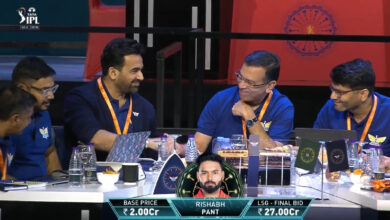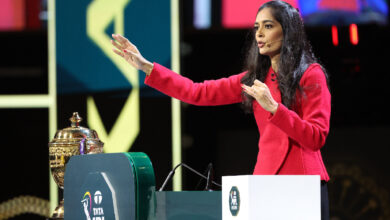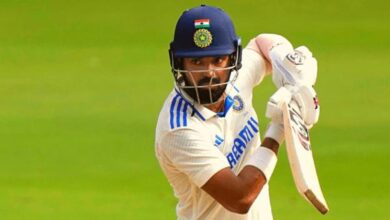Pravin Thipsay writes: Ding Liren forgot the basic purpose of chess in Game 5

It’s the World Championship, the biggest chess match in the world. To qualify for the match, you need to be among the top two players in the world (or hope Magnus Carlsen doesn’t want to compete). It takes decades to reach that level. The preparation ahead of the match is intense. Theories and schools of thought are discussed and deliberated.The basic object of the game though remains the same: to checkmate the enemy King. But one wonders if superfluous modern principles sometimes are so overvalued that players miss that basic object. (You can also read GM Pravin Thipsay’s analysis for The Indian Express of Game 1, Game 2, Game 3 and Game 4)Game 5 of the World Chess Championship between Ding Liren and Ian Nepomniachtchi (Nepo) which took place on Saturday in Astana, Kazakhstan, is a case in point. Nepo won the game, to take a 3-2 lead in the Championship, but the important lesson from this match is how Ding forgot that Nepo’s ultimate goal would be to checkmate his King, and in his quest to attack, forgot that he needed to defend his King at all times.
It seems like Nepo prepared specifically for this game. In the first game, he had chosen a very unambitious set-up and in the third, played something he isn’t really good at. But on Saturday, he chose the Ruy Lopez Spanish Opening, the strong point of the Soviet School and all Russian players.
The Spanish Opening with white was explored after World War II Soviet Grandmasters Isaac Boleslavsky and Paul Keres, who passed on this knowledge to the world. Bob Fischer, Anatoly Karpov, Garry Kasparov and Viswanathan Anand are the greatest contributors to this opening in the last five-six decades.
Nepo’s choice seemed to be absolutely spot on because, on move 9, Ding made, in my opinion, an inaccurate strategic decision posting his Queen side Bishop on the wrong side. It puts the bishop on the wrong diagonal. More on that later.
move 11, the players had reached a comparatively unknown position with only one similar previous game, Alireza Firouzja (White) defeating Anish Giri.
Turning point
The 12th move Nepomniachtchi was new, an important decision to give up a Bishop for a Knight. After the exchange of three minor pieces and a Rook, a technical strategic battle began wherein White had Queen Rook and Knight against Black’s Queen Rook and Bishop.
In a roughly equal position, on move 19, Ding again made an incorrect decision to transfer his Bishop to the Queen’s side, rather than using it to guard the King.
move 22, he got the Bishop only to leave his King without any bodyguards. Yet, there would have been reasonable chances of holding the position if Ding had chosen to post his Queen on a White square on move 30, an automatic choice when you have a Black colour Bishop.
While Ding did make strategic errors, the major credit for this victory should go to Nepo’s phenomenal play between moves 31 and 36. The Russian regrouped all his pieces, including his King, to complete his preparation for a breakthrough against the enemy’s King side. Black was left doing nothing but marking time.
The decisive Pawn Sacrifice on move 37 broke open Ding’s King side. Though Ding succeeded in avoiding a checkmating attack, he had to allow Nepomniachtchi get into a completely winning endgame.
Ding resigned the hopeless battle on move 48. It is remarkable that in both games four and five, the Black Queen was placed in a very poor position for which the players had to pay a heavy penalty.
What was worrisome is that Ding didn’t realise the danger to his King side. In a way, you can say that Nepo played the long game. He knew what he was doing, and what he wanted to do, and more importantly, banked on the strategic errors he knew Ding would make.
It makes me think that Ding really doesn’t have very deep knowledge of the opening that Nepo played. He’s not aware of certain strategic points which he should know at this level. Nepo knows Ding’s shortcomings and that’s why it won’t be the only time we see this opening in the match. Ding has to prepare, and soon.
Superb turnaround
After the second game, we thought that Nepo was going to completely dominate the match but to be honest, this is turning out to be one of the most interesting World Championships in recent times.
It’s been 50 years since we’ve seen such a fighting match. Three results in the first five games is simply an amazing static.
We’re seeing this perhaps because both players are at the same level. Both are confident and not afraid of each other. They are backing their respective strengths, and not scared to attack.
Nepo may be back in the lead and in a dominating position in the match but Ding plays with White pieces in Game 6. The onus would be on him as the game could probably decide the fate of the match.
(Pravin Thipsay is a Grandmaster and recipient of the Arjuna Award. He spoke to Anil Dias).
Moves (Game 5): 1.e4 e5 2.Nf3 Nc6 3.Bb5 a6 4.Ba4 Nf6 5.0–0 Be7 6.d3 b5 7.Bb3 d6 8.c3 0–0 9.h3 Bb7?! 10.a4 Na5 11.Ba2 c5 12.Bg5! h6 13.Bxf6 Bxf6 14.axb5 axb5 15.Nbd2 Nc6 16.Bd5! Rxa1 17.Qxa1 Qd7 18.Re1 Ra8 19.Qd1 Bd8?! 20.Nf1 Ne7 21.Bxb7 Qxb7 22.Ne3 Bb6?! 23.h4! Qc6 24.h5 c4 25.d4 exd4 26.Nxd4 Qc5? 27.Qg4 Qe5 28.Nf3 Qe6 29.Nf5 Nxf5 30.exf5 Qf6? 31.Qe4! Rb8 32.Re2! Bc5 33.g4! Qd8 34.Qd5! Kf8 35.Kf1 Rc8 36.Re4 Rb8 37.g5!! hxg5 38.Rg4 Ra8 39.Nxg5 Ra1+ 40.Ke2 Qe7+ 41.Ne4 Qe8 42.Kf3! Qa8 43.Qxa8+ Rxa8 44.f6! g6 45.hxg6 fxg6 46.Rxg6 Ra2 47.Kg4 Rxb2 48.Rh6 Black resigned. 1–0







